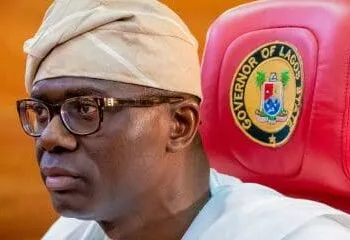After two intensive days of trade negotiations in London’s historic Lancaster House, senior American and Chinese officials announced Tuesday they had reached a preliminary “framework” agreement aimed at resolving mounting trade disputes between the world’s two largest economies.
However, the deal requires approval from leadership in both Washington and Beijing before implementation can begin.
Key Players and Positions
The high-stakes negotiations brought together heavyweight delegations from both nations. Treasury Secretary Scott Bessent, Commerce Secretary Howard Lutnick, and Trade Representative Jamieson Greer led the US team. China’s delegation was headed by Vice Premier He Lifeng, accompanied by International Trade Representative Li Chenggang and Commerce Minister Wang Wentao.
Notably, Bessent departed London early due to congressional testimony obligations, underscoring the competing priorities facing US officials as they navigate both domestic and international pressures.
Rare Earth Minerals at the Center of Dispute
The London talks focused heavily on China’s exports of rare earth minerals—critical components in smartphones, electric vehicle batteries, and green technology infrastructure. US officials have accused Beijing of deliberately slowing approval processes for rare earth shipments, creating supply chain bottlenecks that ripple through American industries.
Concerns surrounding rare earth minerals and magnets will be resolved eventually, as the deal is implemented, Commerce Secretary Lutnick stated with cautious optimism. He indicated that US measures imposed during previous supply disruptions would likely be eased once China demonstrates more efficient licensing procedures.
The mineral exports issue represents a broader pattern of economic leverage that both nations have developed. As Emily Benson from Minerva Technology Futures observed, both countries “have developed almost a mirror arsenal of trade and investment weapons that they can aim at each other.”
Building on Geneva Progress
These London negotiations build upon previous talks in Geneva, where negotiators achieved a temporary agreement to lower certain tariffs. According to Kevin Hassett, President Trump’s top economic adviser, the Geneva talks had established a framework where “we had agreed to lower tariffs on them, and they had agreed to release the magnets and rare earths that we need throughout the economy.”
However, implementation proved problematic. While Beijing began releasing some supplies, the pace fell short of industry expectations, prompting these follow-up discussions.
Diplomatic Tone Remains Cautiously Positive
Despite underlying tensions, both sides maintained professional rhetoric throughout the negotiations. “Our communication has been very professional, rational, in-depth, and candid,” said China’s Li Chenggang, expressing hope that the London progress would enhance bilateral trust.
US Trade Representative Greer echoed this sentiment while acknowledging complexities: “We would very much like to find an agreement that makes sense for both countries. We feel positive about engaging with the Chinese.”
Market Reactions and Economic Implications
Global financial markets closely monitored the negotiations, with Wall Street’s major indexes climbing on Tuesday on hopes for breakthrough progress. However, the broader economic context remains challenging, with the World Bank joining other international organizations in slashing 2025 global growth forecasts due to ongoing trade uncertainties.
Since returning to the office, President Trump has implemented a 10 percent tariff on numerous trading partners, threatening steeper rates on dozens of economies. These measures have already impacted bilateral trade flows, with Beijing reporting that Chinese exports to the United States plunged in May.
Structural Challenges Remain
Industry observers maintain cautious expectations about long-term resolution prospects. Thomas Mathews from Capital Economics warned that Washington appears unlikely to “back off completely” from its current trade posture, potentially continuing to weigh on market sentiment.
The fundamental challenge lies in both nations’ use of economic tools to reshape global power structures. As Benson noted, this dynamic may make traditional trade and investment agreements insufficient for addressing underlying tensions.
Potential Solutions and Next Steps
Experts suggest that meaningful progress could involve China streamlining its export control licensing processes—an area where Beijing appears understaffed relative to request volumes. On the American side, relaxation of certain high-technology export restrictions could demonstrate reciprocal goodwill.
No timeline has been established for the next round of negotiations, leaving both sides to pursue the complex approval processes required in their respective capitals.
Broader Geopolitical Context
China is simultaneously engaging with other partners, including Japan and South Korea, to build a coordinated response to American tariff policies. This multilateral approach reflects Beijing’s strategy of diversifying its economic relationships while managing US tensions.
The London framework represents a tentative step toward de-escalation in what has become an increasingly complex economic confrontation. Whether this preliminary agreement can translate into substantive, lasting changes will depend largely on political will in both Washington and Beijing, as well as each side’s ability to manage competing domestic pressures while pursuing international cooperation.
The coming weeks will prove crucial as both governments evaluate whether this framework merits the political capital required for full implementation.
WHAT YOU SHOULD KNOW
The US and China made progress but haven’t sealed any deal yet. China controls critical minerals America desperately needs, and both countries are using economic weapons against each other. Markets got excited, but this is just step one in a much bigger trade war that’s hurting global growth.











